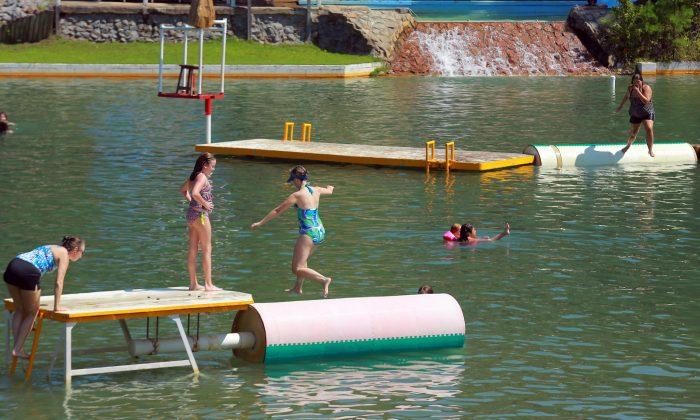Parasitic meningitis was confirmed to have sickened an Arkansas girl last week, health officials said.
LITTLE ROCK, Ark. (AP) — A Little Rock water park closed this week after health officials said the facility was likely the source of a rare and often deadly brain infection, the Arkansas Department of Health said Friday.
Health officials said a person who visited Willow Springs Water Park contracted a rare form ofparasitic meningitis called primary amebic meningoencephalitis, or PAM. That condition is caused by an amoeba called Naegleria fowleri, which lives in lakes, rivers and hot springs. The amoeba typically enters the body through the nose as people are swimming or diving. It then travels to the brain, causing a rare but often fatal infection.
There were 31 Naegleria infections reported in the U.S. from 2003 to 2012, according to the Centers for Disease Control and Prevention. They were all fatal.
Arkansas’ state epidemiologist, Dr. Dirk Haselow, refused to talk specifically about the person with the state’s most recent case of PAM, including whether that person is alive or dead.
However, the Department of Health said Friday that Willow Springs, which features a sandy lake, is most likely the source of the recent infection. The agency said another case of PAM was possibly connected to the water park in 2010.
“Normally a sporadic case of Naegleria is expected to occur about one in 33 million, but two in one place is just astronomically uncommon,” Haselow said.
No one responded to a phone message left at Willow Springs on Friday, but the park’s owners, David and Lou Ann Ratliff, said in statement that they decided to close as of Thursday at the request of the Department of Health.
“Though the odds of contracting Naegleria are extremely low, they are just not good enough to allow our friends or family to swim,” the Ratliffs said in a statement released by the Department of Health. “For the thousands of people who love Willow Springs, we will be taking this time to determine the feasibility of installing a solid bottom to the lake. We will not ever reopen as a sand bottom lake.”
The first symptoms of PAM start about five days after infection and can include headache, fever, nausea or vomiting, according to the CDC. Later symptoms may include stiff neck, confusion, loss of balance, seizures and hallucinations. The disease progresses rapidly and typically kills patients within several days, the CDC said.
People cannot be infected with Naegleria by drinking contaminated water, and the infection can’t be spread from person to person.
Though the chance of being infected with Naegleria is incredibly low, the Arkansas Department of Health says people can take precautions when swimming in warm water by keeping their heads out of water and using nose plugs.
“It’s exceedingly rare. You’re much more likely to get struck by lightning, in fact more than once,” Haselow said. “So we don’t want people to be overly concerned about Naegleria in natural waters.”





